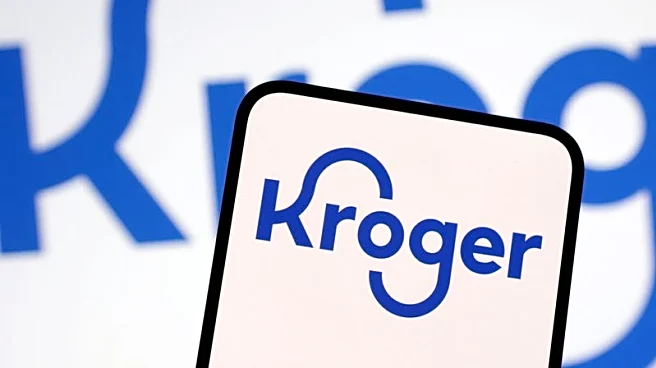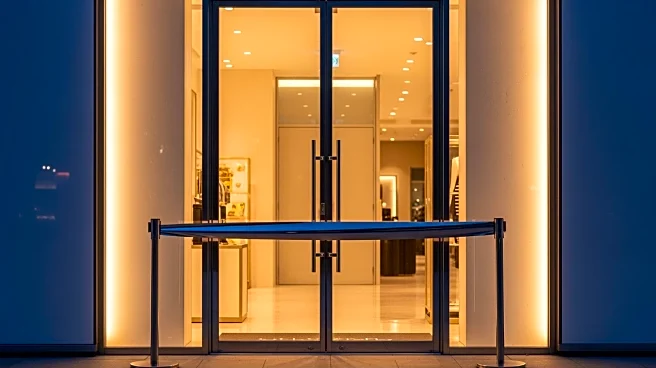What's Happening?
Kroger has announced significant updates to its eCommerce strategy, aiming to improve customer experience and profitability. The company plans to enhance its partnerships with Instacart, DoorDash, and Uber
Eats, allowing customers to receive deliveries in as little as 30 minutes. Kroger expects these changes to increase eCommerce operating profit by approximately $400 million in 2026. The company will close certain automated facilities that have not met financial expectations, incurring impairment charges of about $2.6 billion. Despite these closures, Kroger anticipates a neutral effect on its identical sales without fuel. The company is focusing on a hybrid eCommerce model that leverages its store footprint, third-party delivery services, and automated fulfillment facilities.
Why It's Important?
Kroger's strategic shift in eCommerce is crucial for maintaining competitiveness in the rapidly evolving retail landscape. By enhancing delivery speed and customer options, Kroger aims to attract new households and increase customer loyalty. The expected profitability improvements will allow Kroger to offer lower prices and better store conditions, potentially increasing market share. The expansion of partnerships with major delivery services like Instacart and DoorDash positions Kroger to capitalize on the growing demand for convenient shopping solutions. This move also supports Kroger's retail media business growth, offering new advertising opportunities for consumer packaged goods companies.
What's Next?
Kroger plans to launch a new customer experience on Uber Eats Marketplace in early 2026, further expanding its reach. The company will continue to optimize its fulfillment network, closing underperforming facilities and piloting store-based automation in high-demand areas. These adjustments aim to improve customer engagement and profitability. Kroger's focus on a flexible, hybrid network combining store presence, third-party delivery, and automation is expected to drive sustainable growth. The company will monitor the performance of remaining facilities and adjust its strategy as needed to maximize returns on investment.













